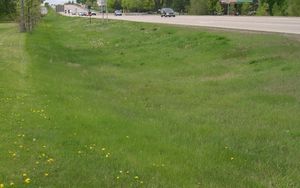
Dry swale (Grass swale)
Dry swales, sometimes called grass swales, are similar to bioretention cells but are configured as shallow, linear channels. They typically have vegetative cover such as turf or native perennial grasses. Dry swales may be constructed as filtration or infiltration practices, depending on soils. If soils are highly permeable (A or B soils), runoff infiltrates into underlying soils. In less permeable soils, runoff is treated by engineered soil media and flows into an underdrain, which conveys treated runoff back to the conveyance system further downstream. Check dams incorporated into the swale design allow water to pool up and infiltrate into the underlying soil or engineered media, thus increasing the volume of water treated.
Dry swale (Grass swale) articles
- Terminology for swales (grass channels)
- Overview for dry swale (grass swale)
- Types of infiltration
- Types of filtration
- Design criteria for dry swale (grass swale)
- Construction specifications for dry swale (grass swale)
- Operation and maintenance (O&M) of swales
- Operation and maintenance of swales - supplemental information
- Operation and maintenance of dry swale (grass swale) - recommend using the above two links
- Assessing the performance of dry swale (grass swale)
- Calculating credits for dry swale (grass swale)
- Cost considerations for dry swale (grass swale)
- Case studies for dry swale (grass swale)
- Plants for swales
- Check dams for stormwater swales
- Supporting material for swales
- External resources for dry swale (grass swale)
- References for dry swale (grass swale)
- Requirements, recommendations and information for using dry swale (grass swale) without an underdrain in the MIDS calculator
- Requirements, recommendations and information for using dry swale (grass swale) with an underdrain in the MIDS calculator
- Requirements, recommendations and information for using swale side slope as a BMP in the MIDS calculator
This page was last edited on 9 February 2023, at 16:08.
